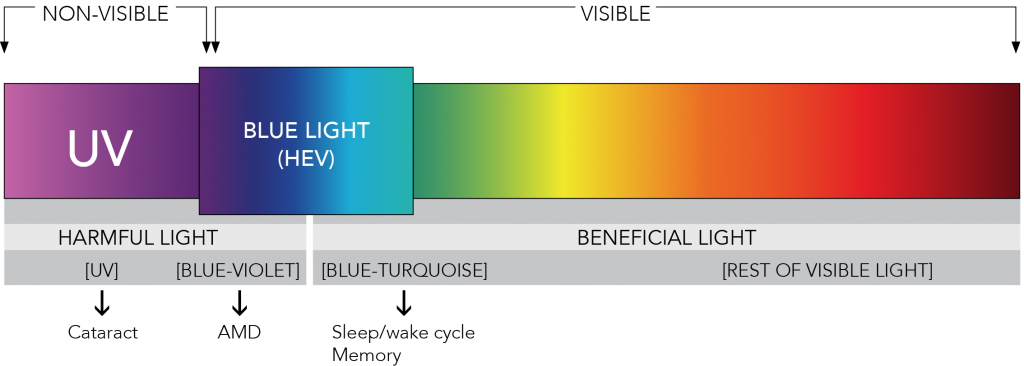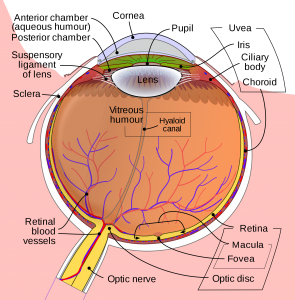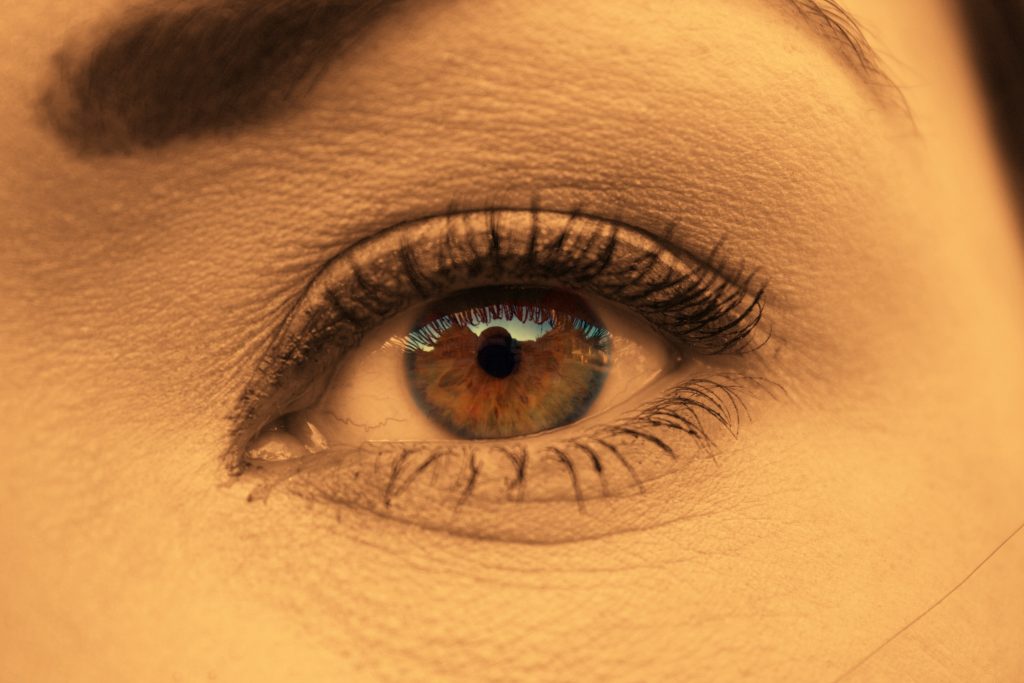The Story of Melanin

If you go outside into the harsh sunlight and wonder about protecting your eyes, consider this. Inside your eyes is a pigment called melanin. It’s the same pigment that gives your skin and hair its color. However, melanin provides more than just color. It also provides the most powerful protection against UV and visible light. It is nature’s solution to the problem of hazardous light.
Melanin Goes Beyond UV Protection
Melanin absorbs light smoothly over a broad spectral range. It absorbs the higher energy light more strongly than the lower energy light. So it absorbs UV more than blue, and the blue more than green – and so on. In this way, melanin provides protection to the lens of the eye against UV thus decreasing the risk of cataracts. In addition, it provides near optimum protection to the retina by filtering the different colors in proportion to their ability to damage the tissue of the retina – thereby reducing the risk of macular degeneration.

Because the blue light is reduced, so is the glare; and vision is thus enhanced. However, blue light is not eliminated so that color balance is maintained. All of these features happen naturally with melanin – through the wisdom of nature.
Melanin, the Free Radical Scavenger
Melanin has been shown to be a powerful neutralizing agent for free radicals – molecules which are potentially harmful to the body. In the eye, it occurs in the retinal pigment epithelium – behind the retina – where its antioxidant properties reduce the risks of macular degeneration. People with more eye melanin are less likely to occur macular degeneration ,whereas people with less eye melanin are more likely to occur of macular degeneration.

An exciting possibility is that melanin bound to a contact lens may exploit this function to neutralize harmful free radicals such as super-oxide within the region between the contact lens and eye. For lens applications, this is a revolutionary concept which may be of significant therapeutic value.
We Lose Melanin as We Get Older

About 15% of our original supply of melanin is lost in the eye by the age of forty and about 25% is lost by the age of fifty. Melanin lenses provide us with a way of compensating for this lost melanin. For people with blue eyes, melanin lenses offer a means of acquiring extra melanin protection in harsh light environments. Melanin plays a critical role in eye protection; ophthalmologists have reported that melanin in the eye reduces the risk of age-related macular degeneration (AMD).
What could be more logical than protecting our eyes with a pigment which is already in the eye for that purpose?
Nature provides us with an original supply of melanin at the back of the eye. Researchers believe that this melanin offers both photoprotection and vision enhancement (as does the black paint inside a camera). This valuable pigment is lost during the aging process. Melanin glasses provide a way to compensate for this lost melanin.
When you look through a pair of melanin glasses, you will be surprised by the brilliant, undistorted color that you can see. In fact, the Farnsworth-Munsell 100 test, which is used to test color vision, show that lenses with melanin have the highest EPF(Eye Protection Factor) values while still preserving color.
The Need to Go Beyond UV Protection
Ultraviolet (UV) light is stopped by the lens of the eye and is involved in the formation of cataracts; however, blue, violet and other colors in the light spectrum are able penetrate the lens and reach the retina. These high-energy visible rays can lead to Macular Degeneration. We need to go beyond UV and protect against these other rays. Melanin glasses with their higher EPF values transmit less high-energy visible light which provides more protection to the retina.
How Much Blue Light Should be Filtered?
This question is essential in our effort to protect the eyes. The filtration of blue light is important because this is the portion of the visible light spectrum that can cause the most damage to the eye. The question has become more relevant due to the high amounts of blue light emitted from electronics. Blue light can disrupt sleep, damage the eye, and cause overall discomfort. However if too much blue light is filtered, it can lead to difficulties in color perception and differentiation. The goal is to find the optimal amount of blue light to protect the eye and maintain the ability to differentiate between colors. This paper answers the questions “What is Blue Light?” and “How Much Blue Light Should be Filtered?”.
Scientific Information on Melanin Lenses
In the last decade, new research has produced some very useful results that suggest specific steps for the photoprotection of the eye. Specifically, information is now available on the degree of damage to the lens and retina due to light exposure from different regions of the electromagnetic spectrum.
Studies have shown the spectrum of sunlight from the ultraviolet and infrared portions of light produce varying degrees of ocular damage under accelerated testing. This research led to the important role played by UV blocking lenses. The next significant development to selective filters was the introduction of blue light blocking lenses which emphasized glare reduction and contrast enhancement with the removal of blue light rather than photoprotection.
At about the same time, the effects of visible light on the retina of Rhesus monkeys were being studied. It was discovered that damage from visible light, intense enough to cause lesions to the retina, showed a specific dependence on wavelength and revealed what is called the action spectrum. According to this spectrum, blue light is more damaging than green light, and green light is more damaging than red light. The probability for this photochemical damage to the retina increases with increasing energy or action spectrum.
The action spectrum suggests that blue light is the most damaging color ,but it does not need to be eliminated – rather it needs to be reduced more than any other color. In following the action spectrum, it is reasonable to filter other colors in proportion to their damage, blue more than green and green more than red light. Furthermore, the data suggests a relatively smooth curve for the actual action spectrum. In this case, a smooth curve having the characteristics of increasing absorption with increasing energy would represent a general target in the ongoing evolution of photoprotective lenses.
Melanin’s absorption spectrum (the pigment in our hair, skin and eyes) is quite similar to the action spectrum for photochemical damage. This interesting, but not surprising result forms the basis for efforts to incorporate melanin into optical plastics.
More Information
If you would like more information about the science behind the creation of our melanin lenses, you can click here to view Dr.Gallas’ LinkedIn. On this page, you can find more information about Dr.Gallas and his numerous patents.
